Day 1
Our mobility kicked off with an introductory session during which participating schools introduced themselves and shared their wishes and expectations of the mobility. All participants were enthusiastic and this set the perfect tone for the upcoming week.
We then had the opportunity to visit the hosting school and were given a tour of the library and labs. Students then took part in a treasure hunt in the school environs while teachers were treated to a visual reality session, and tried out a professional ship simulator. Both elements were installed as part of a maritime training programme, funded by a European investment programme.
Following lunch prepared by the local students’ parents consisting of a wide array of salads and Moussaka, we headed to Filiatro beach which provided ample opportunity to socialise with our colleagues.
So far our immersion into the Ithacian way of life has been immensely positive. It is characterised by a calm pace of life, a caring community and pristine natural settings.
Day 2
Our second day was focused on two elements: the literary value of the Odyssey and the musical heritage of the participating countries.
The Ithacian contingent prepared a video which summarised the Odyssey and later all participants were invited to discuss how, like Odysseus, the Mediterranean nowadays also presents challenges to which we need to be sensitive.
Later a dance workshop was organised and each participating group taught a traditional dance which the other students tried to emulate. Following this workshop, an impromptu dance session characterised by popular songs brought the morning’s session to an end.
We quickly set off on a trail towards the north of the island, which provided inspiring views through roads flanked by aromatic herbs and citrus trees.
Following lunch, we had a short rest and set off to a beach near the spot where it is said that Odysseus disembarked following the Odyssey.
The highlight of the evening was a concert by the local philharmonic orchestra. Their repertoire ranged from the traditional to contemporary rock. It was a well-executed programme, which underlined to the solid preparation of the musicians.
This brought an end to the busy yet enriching day. We had an early night as the following day we had to wake up early to head to the neighbouring island, Kefalonia.
Day 3
Today we had a very early start to catch the ferry to Kefalonia where we joined other students from the larger island to disseminate the Erasmus+ project and encourage other schools to seek and develop similar programmes.
Following an audio-visual presentation which summarised the whole project, in light of its aims and objectives, our students took to the stage to share their experiences in this programme, for which they received enthusiastic applause.
We then enjoyed a break in the historic centre of Argostolion, the capital of Kefalonia. We were able to visit the Orthodox cathedral dedicated to Saint Spiridone.
This was followed by a visit to a rare geographical feature: an underground river, part of which is in a collapsed cave. We were taken on a short tour on a rowing boat during which the guide provided a detailed overview of the long geographical history of this feature.
Following a hearty lunch, we headed back to Ithaca where we had time to refresh ourselves and head back to Ithaca’s main square for some quality time with our colleagues and peers.
The successful sharing of all partners' experiences is an indispensable element in such projects and we hope that our contribution has inspired other schools to pursue such projects, leading to further collaboration with our school.
Day 4
So far, our activities were focused on the south side of the island. As one may notice, the island seems to be made of two adjacent peaks joined by a narrow sliver of land. It was time to explore the north part of the island which features many churches and virgin natural landscapes.
Our first stop, after a steep ascent, was the monastery gardens. These were dominated by a monolith and provide a space for monks to meditate and pray among the cypress and olive trees.
We were then given a tour of the Church of St Spiridione. This church features elements which are extremely rare in eastern orthodox churches. While mainstream orthodox churches are more sedate and the paintings are characterised by a more sombre, elongated style, the Ionian orthodox churches feature brighter colours and figures take on a more dynamic posture. The guide explained that this is a Catholic Latin influence, which makes perfect sense given the close proximity to Italy.
Following another visit to a monastery which is renowned for a miracle and is a national Marian shrine akin to our own Ta' Pinu.
Lunch was served at Kioni before we headed back to Ithaca. Following a short rest we headed to the farewell party where we had the final chance to meet local colleagues and students in an informal setting.
Day 5
The certificate award ceremony introduced today’s activities. The local school’s population was present and the major of the island, who was one of the speakers at the ceremony, emphasised the benefits of Erasmus+ projects and augured that the future offers similar opportunities.
Following the presentation of certificates, we watched a summary of all mobilities which brought many positive memories and spontaneous applauses from the audience.
Following a short break we boarded a sea taxi which transferred us to a remote but beautiful beach. The sea was crystal clear and calm, irresistibly tempting in other words, proven by the fact that most of us took a refreshing dip.
Following our return to our residence, we started to pack up in preparation for the next day’s early departure . The onset of a melancholic aura was palpable but predictable, as a wholesome week of exploration and encounters with so many lovely people was coming to a close.







